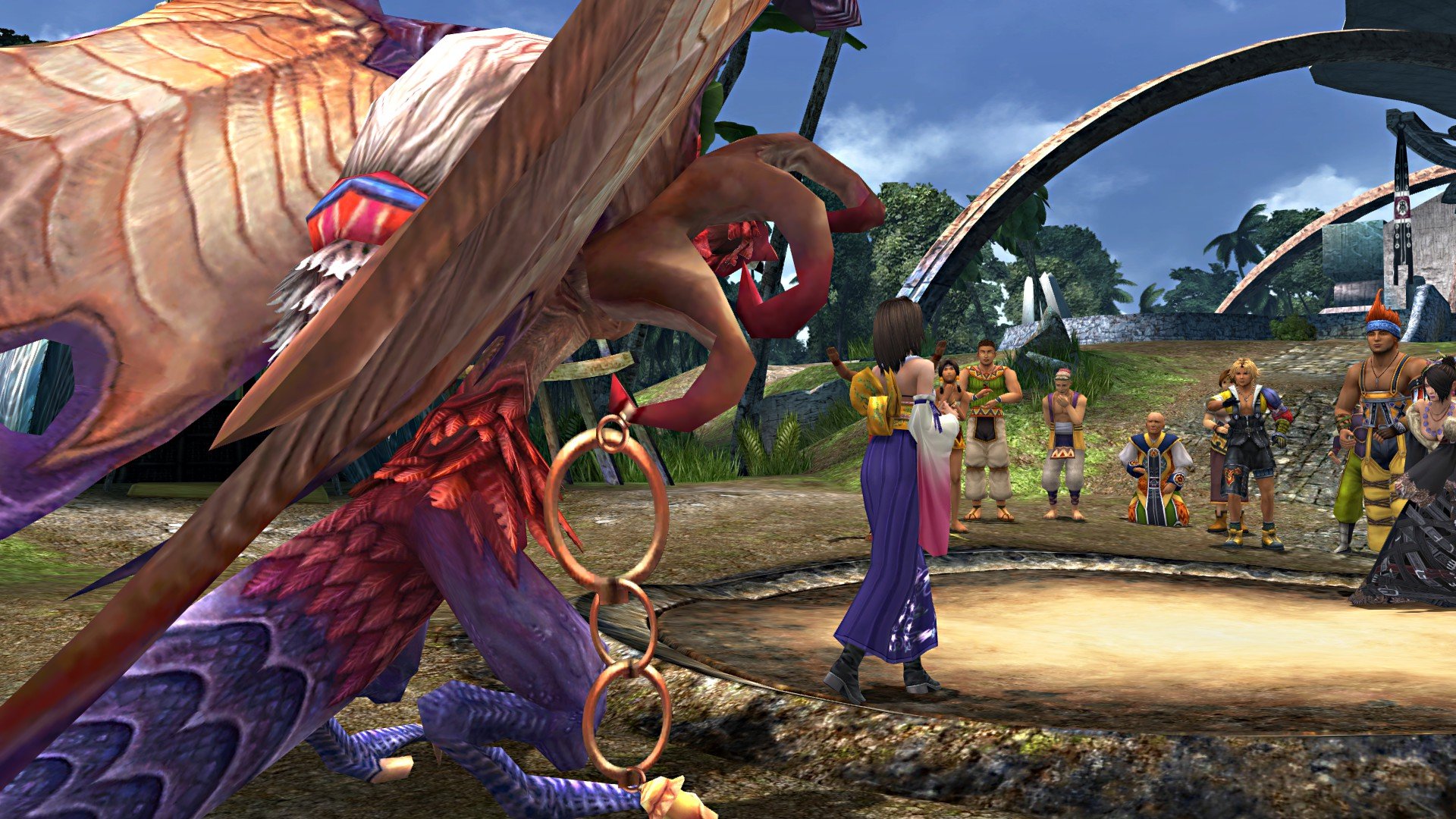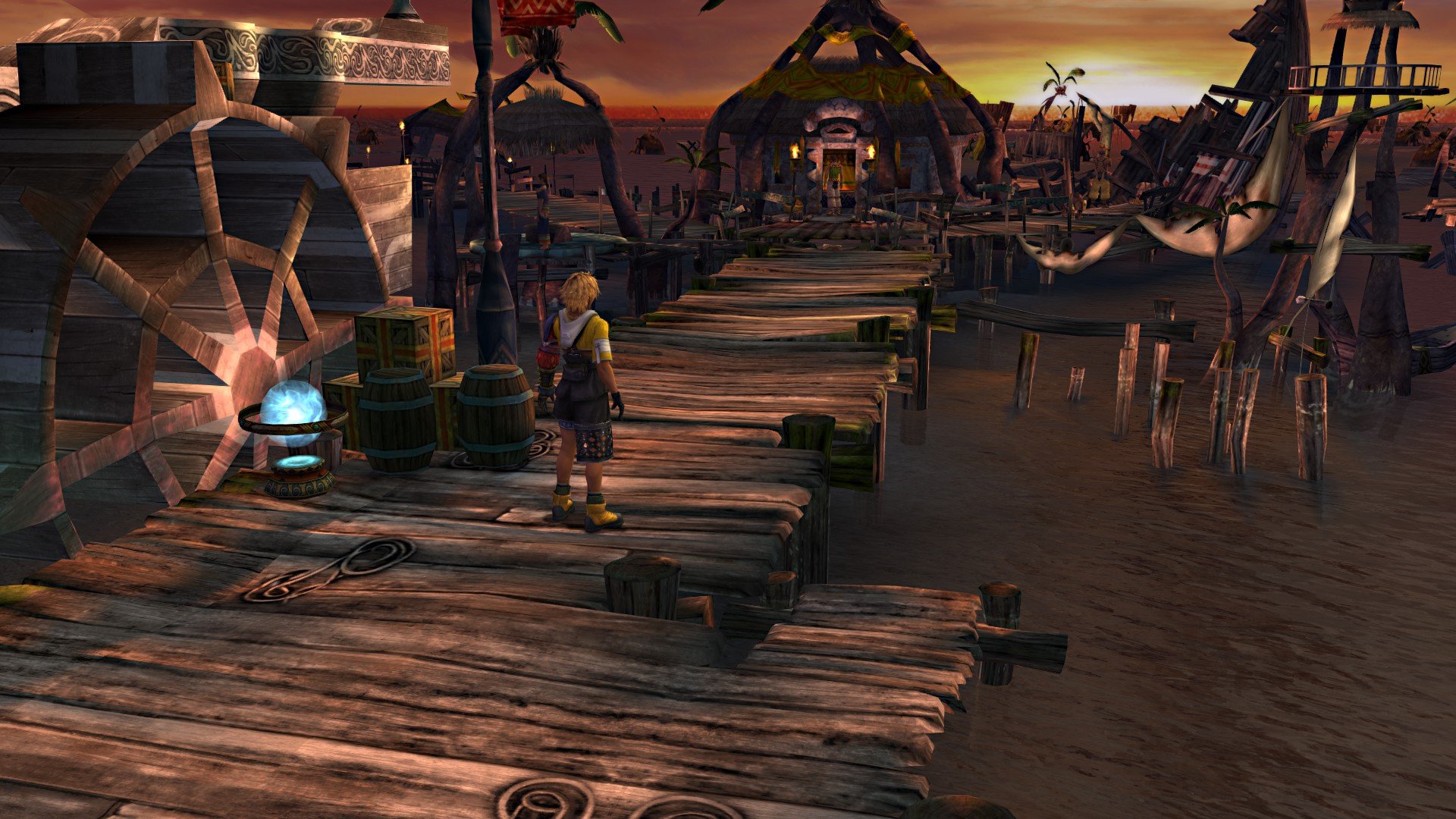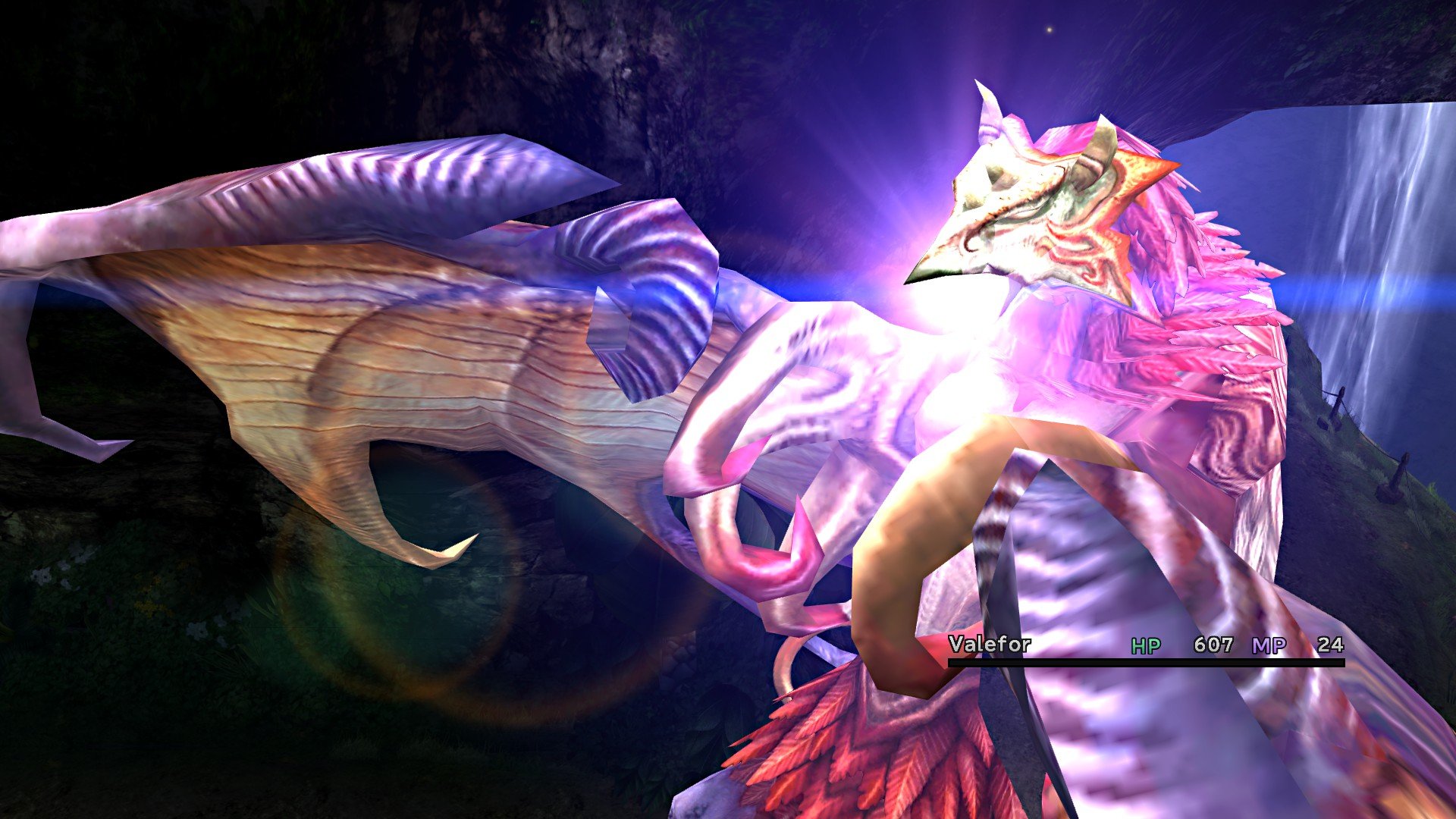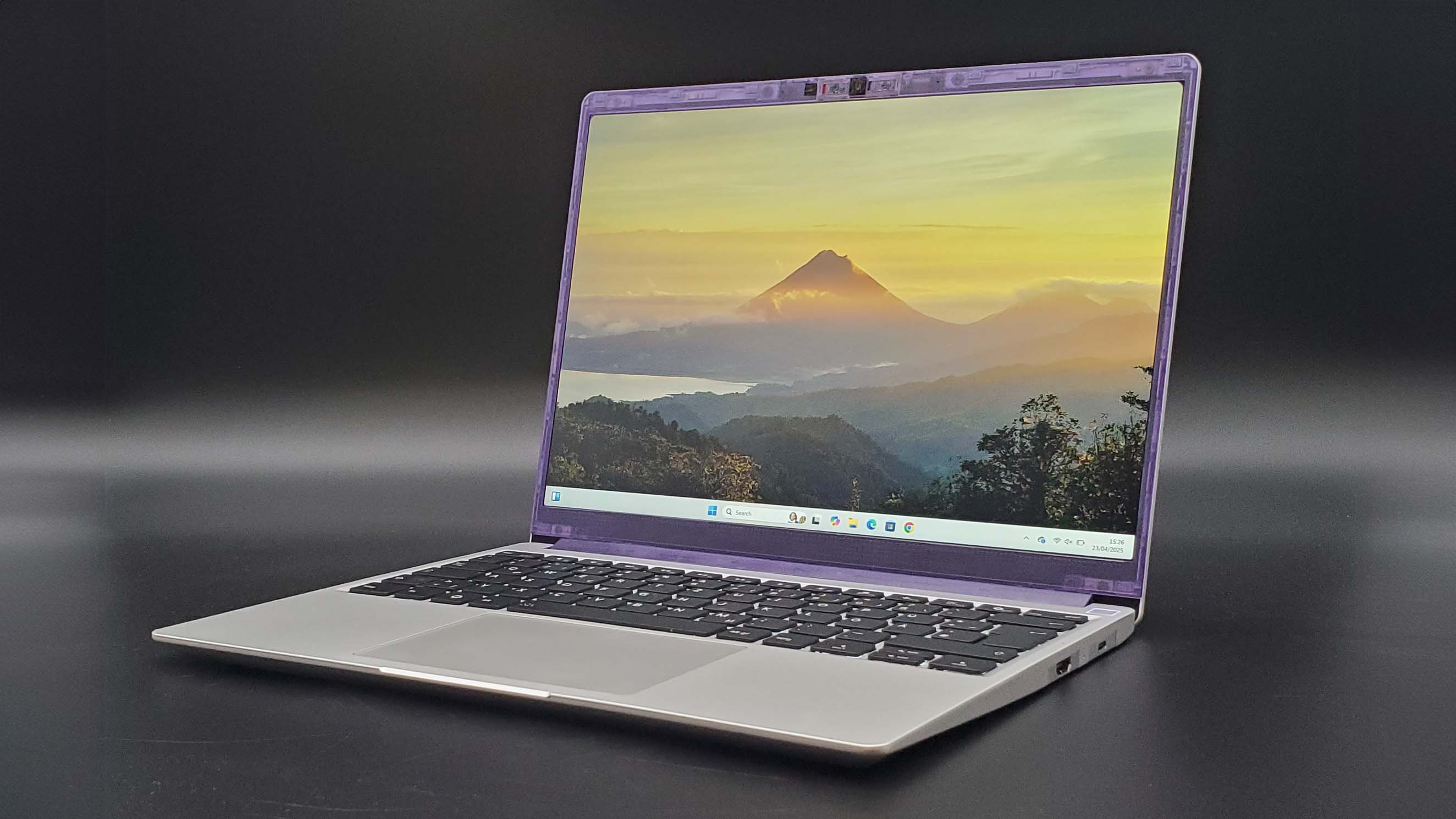Our Verdict
One great RPG and one curio. Not a perfect port, but definitely Square Enix’s best stab at bringing Final Fantasy to PC so far.
PC Gamer's got your back
Square Enix knows how to spoil us. In the space of one month, the publisher has brought both Final Fantasy IX and X/X-2 to PC in a condition far superior to its XIII port from a couple of years ago. These are two gems from the RPG series' undisputed golden era, leaving Final Fantasy XII as the only numbered 3D entry not to come to PC. Final Fantasy X is the RPG that truly got its hooks into me when I owned a PS2—I'm delighted it's arrived on Steam, and that the slightly lesser direct sequel X-2 comes as part of this decent value package as well.
Final Fantasy X is a turn-based RPG, a mixture of exploration and random battles. As Tidus, an athlete living in the metropolis of Zanarkand, you see your home get destroyed by an enormous mythical creature called Sin (basically a big whale with a city on top) and wake up 1000 years in the future. Sin has terrorised the world of Spira in cycles ever since—even after Sin is destroyed, it eventually comes back, and the religious factions of Spira are convinced that the people’s own indiscretions are the reason why. You join a pilgrimage with a summoner, Yuna, as well as her guardians and friends, to destroy Sin and bring peace to Spira once more. Final Fantasy X-2, its direct sequel, is (mild spoiler alert if you’ve really never heard of these games) a lighter story set in a newly liberated Spira, where you instead take on the role of Yuna—it’s a very different game with a more freeform structure and revamped combat.
They’re an interesting one-two of entries in the series. Final Fantasy X’s combat system is entirely turn-based, so players can take their time to plan the right move in battle. In X you have seven party members, each with different specialities: Tidus is a fast warrior, whereas his pal Wakka has a projectile attack he can use on flying enemies. Older swordsman Auron is basically a tank, the moody Lulu is a black mage, Yuna’s cousin Rikku is a thief and so on. You can swap between party members on the fly at any time in battle, which results in a combat system that feels like it rewards strategically-minded players—even if the main quest is perhaps a little bit too easy to really get the most out of it.
As well as being your party’s white mage, Yuna has access to a roster of summon creatures that players directly control, a mixture of Final Fantasy favourites like the fiery beast Ifrit, the cross-armed dragon Bahamut and the dimension-spanning horror creature (and my favourite summon in the whole series), Anima. These mighty beasts make it a bit easier to knock through the game’s harder bosses, and being playable characters with their own customisable stats and abilities, they offer an extra layer of depth to the combat.

The conventional levelling up system used by previous entries in the series is replaced by the Sphere Grid, a giant board filled with nodes that add abilities and stat upgrades to your character. In battle, you earn ‘moves’ on this board, which let you activate new nodes. Later on, you can even unlock paths into other characters’ parts of the board, so you can teach emergency healing spells to non-magic party members, for example, or make your roster more flexible by having multiple fighters learn debuff attacks rather than just the one.
X-2, meanwhile, features a turn-based combat system that runs in real-time (though you can slow it down), and therefore feels more immediate. Instead of seven characters, you control three. Customisation instead comes in the form of dresspheres, which are like classes you can swap on the fly (white mage, gunner, warriors—there are twenty in all). You build loadouts of dresspheres using a system called the garment grid, which offers plenty of flexibility in the midst of battle as long as you’ve planned for a variety of scenarios. Timing it right allows you to chain attacks for higher damage, too.
It’s a close call as to which of them has the better combat system—for me, it’s FFX, because that sphere grid is such a compelling way to shape your characters behind the scenes, whereas X-2’s progression systems are a bit too slim by comparison.
In all honesty, it’s rarely just the combat alone that makes a Final Fantasy game great to me—it’s all about the world. And I think both of these games have the greatest setting of the entire series. Spira is an extraordinary backdrop. FFX's contrast between the dreamlike metropolis of Zanarkand from the game’s opening and the scattered tropical settlements of Spira that follows is a very effective way of introducing the effect that Sin has on the world. Any area that gets too built up is wiped out by this creature—as a result, Spira is simply a series of small towns and villages. You feel like you're wandering around the quiet, exotic ruins of a world that was destroyed hundreds of years before. It's varied, colourful and original.

Investing my imagination in that beautifully-realised place has been one of the great pleasures of my two decades of playing games, and it’s why I’m glad this collection has come to PC. It’s aided by a soundtrack that is the series’ best in my book, at least in the case of FFX. Memorable tracks like ‘Wandering Flame’ help sell the idea that there is this destructive force hanging over the world, and that anyone could be a victim of Sin next—the world-building is really effective. It’s a shame the script and voice-acting, both products of the early days of 3D games with full VO, let it down.
FFX’s voice-acting is frequently shrill, rarely funny and almost always over-the-top, and it undermines the sombre tone that the game otherwise tries to reach. It just doesn’t feel like it’s been directed by anyone, even though the actors here are all pros who I’ve heard do excellent work elsewhere. Some sequences are so embarrassing that they’ve become the stuff of internet legend—an early sequence where Tidus tries to teach Yuna how to ‘laugh again’ has been mocked constantly since the game’s original release 15 years ago, and for good reason. X-2 represents a significant improvement, making its characters feel a bit more like people, but the change in tone between the two games creates its own problems.
FFX-2 shows the world moving on after Sin. Spira is liberated, rather than repressed, and you see how that emerges in people's self-expression—particularly Yuna's, who trades in robes, staffs and saving the world for hot pants, guns and the life of a treasure hunter. I like this effort to show Yuna moving on and figuring out what to do with her life next—it’s the tone and execution I can’t really stand. FFX-2 doubles down on slapstick cutscenes, J-pop and cheesecake, and compared to the perhaps overly sincere tone of FFX, it’s just too damned jolly. Moments like a massage minigame, complete with orgasmic sound effects, or scenes set in a hot spring reinforce the idea that X-2 is very fan service-y.
I originally played both of these games when I was a young teenager, that age where you’re guilty of taking things too seriously, and I hated FFX-2 for being such a contrast to the original. Playing it on PC these days, I’m more relaxed about it. X-2, after all, is the only game in the series so far to have an all-female cast, and attempts to bring things like pop music into Final Fantasy as a way to portray a world moving on from oppression by Sin is kind of brave. It’s just not for me. It also adds a host of new, significant characters to the world that weren’t in Final Fantasy X at all, which has the effect of making the story feel a bit fanfic-y. One thing I hated at release and still hate now is that getting the proper ending to X-2 requires 100% completion of the game, which is a real grind. At least now you can watch the true ending on YouTube instead of wasting hours on boring busywork.

While both games are relatively easy to complete, each comes with significant extra content for the truly dedicated. Final Fantasy X’s Dark Aeons are ominous super bosses that are dropped into the world at a key part in the story, like the Weapons from Final Fantasy VII. Plus, the minigame Blitzball—a kind of underwater RPG football game—is the series’ second best distraction after FFVIII’s Triple Triad, should you get past the initial difficulty curve.
This port is more or less the same as the PS4 version released last year. I noticed a bit of stuttering when entering some environments, particularly in X-2, but far from anything game-breaking. I recommend using a controller to play: you can map the keyboard controls, but I can’t find a way to use the mouse to select where to walk around. As a nice contrast to the XIII games on PC, you can access a range of key binding and video options in an in-game menu this time, rather than fiddling with settings in a launcher. The picture is lovely and crisp, bringing the best out of this gorgeous setting, and there are plenty of graphics options to choose from. The one caveat is the 30fps lock—if you don’t think you can handle that, fair enough, but for a 15 year-old game I can live with it. This version is so nice that I wish they’d go back and do equally decent jobs with XIII and VI.
This is a good value package, too. This remaster retailed for full price on PlayStation, and here we get them at a budget price, which is generous. There are some of signs of age on both games, particularly the random battles and voice-acting, but new players will still get a lot out of them if they can tolerate that. Spira is a wonderful world that’s well worth exploring, and X and X-2’s different approaches to combat systems are both deep and exciting. Now we’re just Final Fantasy XII and a couple of spin-offs away from having all the best moments of the series on PC.
One great RPG and one curio. Not a perfect port, but definitely Square Enix’s best stab at bringing Final Fantasy to PC so far.



